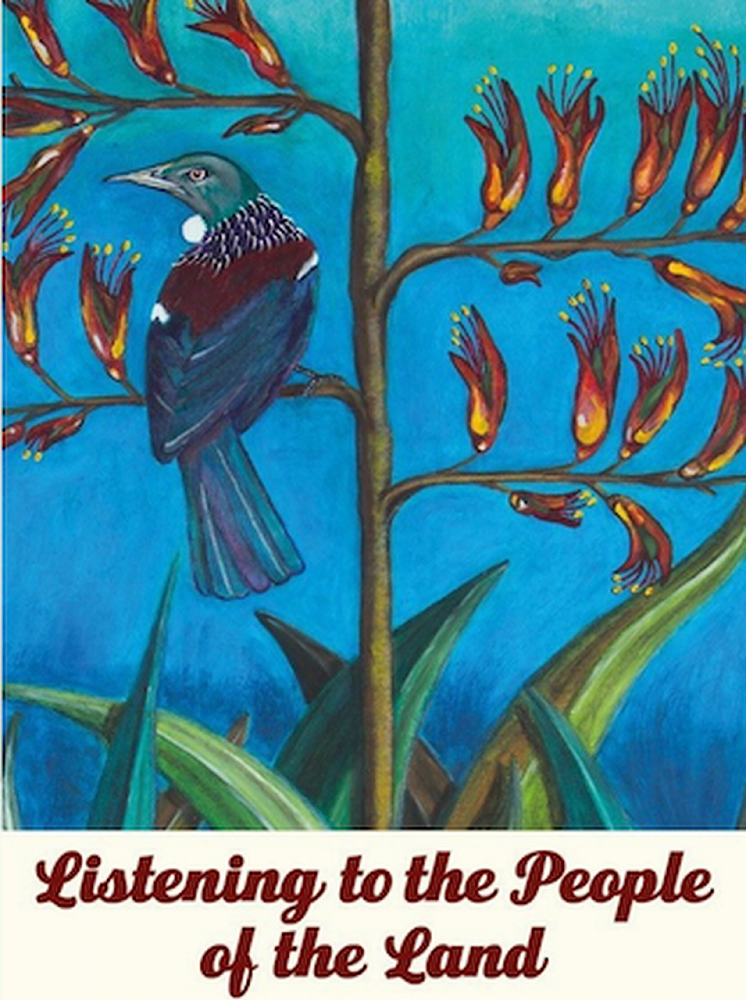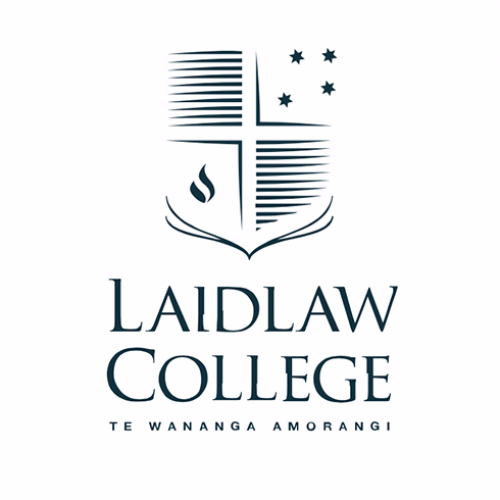
Book Review: Listening to the People of the land: Christianity, Colonisation and the Path to Redemption
Susan Healy (Editor)
Given this book’s title, it is best to be clear about its perspective from the outset. The voices of the contributors, all bar one, are not of tangata whenua descent. Although there is much engagement with tikanga Māori concepts, culture and language, this is decidedly a collection of “settler” perspectives. It is designedly so, as it is an exercise in “conscientization” for the majority Pākehā settler Christians of Aotearoa New Zealand.
As the editor, Susan Healy states in her introduction, the book has two main aims. One is to explore “the underlying causes of the harm in colonisation and Christianity’s contribution to that harm.” The other is “to search out how Christian churches, and those of general Christian persuasion, could play their part in healing the deep-seated ills of colonisation” (11-12). It aims to engender a process of redemption: to examine how Christian settler communities could “take full responsibility for their part in colonisation and its ongoing ill effects” (15); and to do something about rectifying these.
To this end, the book has five parts, the first three of which examine and lay out the history and the issues, case studies of churches (the Methodist and the Anglican) that have attempted to redress some of the effects of their colonial past, and suggestions for further “listening, learning and dialogue.” A fourth part provides some resources from Christian history and theology; while the fifth brings in some “responses and further reflections” both from within Aotearoa New Zealand and internationally (Australia and South Africa).
In the first part (“Getting Behind Colonial Myths”), Healy – drawing upon work done for her doctoral studies – lays out some of the history and effects of colonisation. Driven by the “Doctrine of Discovery” European, “Christian” colonisers often rode roughshod over the culture and mores of indigenous peoples. In the case of Aotearoa, for instance, this often meant substituting English or European names for Māori. It also meant denigrating the “Other’s” beliefs and failing to recognise the worthwhile values and ethos that already existed.
In two further chapters, Healy outlines the role of missionaries in facilitating colonisation (through their desire to bring “civilisation” to Māori), and in encouraging Māori to sign the Treaty of Waitangi. Though she recognises the desire of many early missionaries to protect Māori interests, through their efforts, the way was opened to the establishment of “settler Christianity” and settler dynamics which brought malign effects to Māori, chief amongst which was the loss of ancestral lands. These chapters also explore the clash of cultural values, for instancethe Māori ethos of kaitiakitanga (guardianship/stewardship) over against the European tendency to “conquer” and exploit the earth.
The history of the arrival and establishment in this country is complex, of course, and if there is a slight defect in the narrative it is an apparent tendency to correlate Christianity with colonising and patronising Western impulses. This tendency is particularly marked in a chapter by Jen Margaret. This overlooks (and rather denigrates) the fact the much of the early spread of the Gospel in Aotearoa was undertaking by Māori themselves: and the uptake of Christian faith happened quite readily. A final chapter by Steve Taylor (“Redeeming the Past: An Ancestor Perspective”) provides something of a corrective to this as he warns against two possible reactions: one of nostalgia, where the missionary past is painted in rosy terms, the other of cynicism, where “the missionary is coloniser, with indigenous people portrayed as passive victims of imperial expansion” (310). Both are flawed, as he says: a corrective account may be found in J. Ruka, Huia Come Home (New Plymouth: Oati, 2017), a book that shares some of the same concerns as this one. As an aside, with the history of Aotearoa New Zealand set to become compulsory in schools, there is an urgent need to ensure that accurate and balanced views are promulgated to young people.
Nonetheless, the association of Western Christian mission with imperial impulses, and in Aotearoa, the ill-effects of settler Christianity on Māori life (Christian or otherwise), cannot be denied, so that this book provides material for serious consideration and attention. Part Two (“Works of Conversion”) provides some encouraging description of attempts to overcome some of colonialism’s more malign effects. Mitzi Nairn provides an overview of the National Council of Churches’ Programme on Racism, while Barry Jones provides a Pākehā perspective on the bicultural journey of the Methodist Church of New Zealand – Te Hāhi Weteriana o Aotearoa, and Arapera Ngaha, describes Te Taha Māori and its development as the church strove to become more biculturally aware, and empowering of Māori Methodists. Adrienne Puckey tells the story of the Anglican Church’s chequered progress towards the current situation under the new Constitution revised in 1992. In the case of both churches, Māori have had to do the heavy lifting in maintaining and promoting bicultural relationships, and there are still challenges when it comes to ensuring genuine partnership, where power and resources are shared equally.
In Part Three (“Listening, Dialogue, Learning”) Healy discusses the Māori concept of ownership, which includes the sense that resources are gifted, that bounty is to be shared, and this is married to the understanding of the need for conservation and guardianship. European Christians need to learn respect for the views and spirituality of Māori and overcome a tendency to denigrate as “non-Christian” such spirituality.
Reflecting on his work with indigenous peoples, both Māori and Australian Aboriginals, Peter McDermott discusses the need to approach these cultures with respect and the sense of being accepted into someone else’s home. One must be humble, and take a long view, as one adopts a strategy of inculturation, that is, allowing the new Christian culture to be brought in (inevitably with the values and “clothes” of the evangelising culture) while making sure that the receiving culture is listened to, understood and invited to have a voice. Dialogue must be genuine. Kennedy Warne provides a personal account of his encounter with Māori and Aboriginal cultures, highlighting especially their cosmologies and the sense of connection with the land and respect for it.
In the fourth part, Mary Betz provides insights from both scripture and the sweep of Christian history of the Bible and the Church’s teaching on concern for justice, equitable relationships, attention to the needs of the poor, and care for the earth. Helen Bergin, meanwhile, examines the work of four feminist theologians who highlight, in particular, the relational nature of the Trinity, expressed in mutual and communal love and action. She explores the liberating power of these insights and, as shown in the work of a Black American theologian, how slave women found empowerment and freedom in the image of God as a “communal being” (248).
Part five, “Responses and Further Reflections” contains some of the most stimulating contributions. Mike Riddell ponders the contribution that mysticism can make towards practices that counter the creation-dominating exploitative approach of Western Christianity. He describes ecological collapse and global inequality as two particularly pressing issues requiring attention.
Jen Margaret issues a call for “tangata Tiriti” (i.e. non-Māori) to face up to and acknowledge the effects of colonisation on Māori. She promotes the need for constitutional reform as a way of resetting the foundations and recognizing tino rangatiratanga, providing a space for this alongside kawanatanga; that is, providing for two complementary systems of governing authority and control. Biculturalism (which easily gets confused with debates about multiculturalism) must be replaced by “Treaty relationships.” These are challenging ideas, but well worth grappling with: and she provides a number of questions to facilitate thinking and debate.
Finally, the book ends with some “International Perspectives,” one from Mark Brett (an Australian Biblical scholar) who discusses the need for confession and repentance in the light of our current post-colonial (and in Australia, post-1992 Mabo decision) situation. Anselm Laurence Prior considers, out of the South African scene, the need for “inclusivist pluralism” and “inculturation.” He considers that African women theologians should and can play an important role in helping find a “balanced theology.” Kiwi, Steve Taylor, rounds out this section with a reflection on “An Ancestor Perspective:” how we may face the past honestly, but avoiding both nostalgia and cynicism, to redeem it and move forward drawing upon the riches of another culture.
This book, both in its description of our colonial history, and in its delineation of current challenges and issues, as well as its suggestions, or proposals for ways forward, is a rich resource for discussion and debate. It may need to be supplemented by other perspectives: and perhaps another book is needed in which indigenous voices are heard speaking for themselves? But, as a way of raising the consciousness of “settler Christians,” educating, and sparking debate it can be highly recommended.
Derek Tovey is book review editor for Stimulus. This book may be purchased online through Accent Publications. https://www.accentpublications.co.nz/
